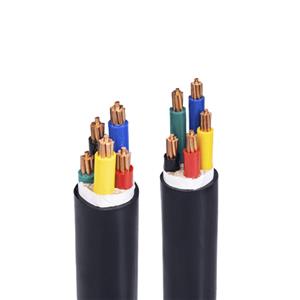How to choose household electrical wires?
Household wires are related to the safety of household electricity use, and choosing the right wires is crucial. Once there is a problem with the quality of the wires, it may cause circuit failures, fires and other safety hazards.
In home decoration, wires are often overlooked as part of hidden projects. However, home decoration wires are like the "blood vessels" of household electricity, carrying the heavy responsibility of delivering electricity to various electrical equipment. If you choose wires of poor quality, it is like burying a time bomb, which may cause serious consequences at any time. In the decoration link or the key link of water and electricity transformation, the choice of wires will be involved. Once it comes to the choice of household wires, many customers don’t know how to choose wires. Next, the wire and cable manufacturer tells you to choose household wires, mainly examining the two dimensions of the wires: thickness and softness.

The unit for measuring the thickness of wires is the cross-sectional area. Our common specifications are 1.5 square, 2.5 square, 4 square, and 6 square. The thicker the wire, the greater the current carrying capacity, and the higher the price.
In general, 6 square wires are mainly used for household main wires, and the remaining specifications of wires are used in other common life scenarios: for example, in daily life, most household lamps have low power, so 1.5 square is the most suitable for lighting and switch lines; for ordinary wall sockets, 2.5 square is the best; and for some high-power appliances used in kitchens and bathrooms, such as refrigerators and water heaters, 4 square wires are needed.
There is also a special case. If there are ultra-high-power appliances at home (power>5000W), the most common one is instant water heaters, then 6 square wires are needed. Of course, the premise of using ultra-high-power appliances is that the main line of the household must be greater than 6 square, otherwise it will definitely not work.
Many customers will have this question, why do products of the same model and specification have different colors? Do different colors represent different quality? In fact, this is not the case. Wires of different colors are used for different purposes, such as red for live wire, blue for neutral wire, and two-color for ground wire. Ordinary household wires come in a variety of colors, and different colors have different uses. Generally speaking, red and yellow are usually used for live wires, two-color is generally used for ground wires, and blue and black are generally used for neutral wires. When wiring home decoration, wires of different uses must be strictly distinguished by color, which not only improves electricity safety, but also facilitates future maintenance and identification of lines. As a professional electrician or home improvement electrician, it is crucial to use wire colors correctly, which involves electricity safety and the convenience of future maintenance.
In the category of household wires, there are two common models: BV wire (single conductor hard wire) and BVR wire (multi-strand glued soft wire). BV wire is composed of a single copper wire, has a higher hardness and is cheap, and is generally used for basic wiring for decoration. BVR wire is composed of multiple strands of soft copper wire, which is soft and flexible, more expensive, and suitable for wiring scenes that require bending and are more complicated. These two wires are essentially not much different, but there will be some differences in the use effect.
For example, the BV wire is very hard, so it is not easy to bend during renovation and wiring, which increases the difficulty of construction to a certain extent; but from another perspective, it is precisely because the BV wire has only one copper wire and is very hard, so it is easier to wire than the BVR soft wire and has a longer service life.

From a comprehensive comparison, these two types of wires have their own advantages and disadvantages. When used in home decoration scenarios, they can maximize their value by matching wiring. For some conventional power usage scenarios, it is sufficient to use BV hard wires, while for areas that require a large number of bent wires and more complex power usage scenarios (wiring in various cabinets), it is recommended to use BVR soft wires.




